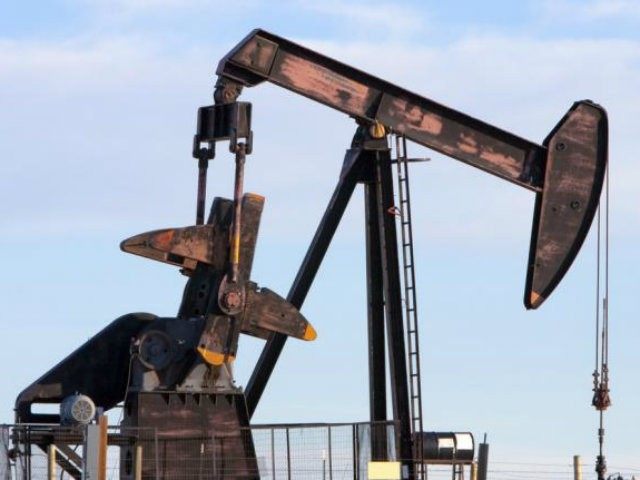OPEC’s Secretary General Abdulla al-Badri announced that the oil price may have bottomed out—indeed, we had four straight days of increase—and predicted “you will see more than $200 when it comes to future oil prices.”
Al-Badri makes a strong argument. In the current reduced-oil-price environment, we see oil companies cut back on budgets, curtail exploration, and pull in rigs—in many places it costs more to get the oil out of the ground than the present sales price. The Wall Street Journal (WSJ) reports: “the number of rigs drilling in the U.S. has sunk to a three-year low.”
In today’s market for crude oil, a reduction in the number of drilling rigs in the U.S. does not mean overall production declines. It only means less future production. Tim Snyder, an energy economist with Lubbock, Texas-based Pro Petroleum Inc., who analyzes trends to help his company, and others, make educated decisions and manage risk, told me: “We anticipate a decrease in ‘new’ production in the U.S. as exploration and production companies reallocate capital expenditures and reduce drilling exposure.”
Economics 101 tells us that less supply results in higher prices. Snyder says: “Once prices reach the $70-75 per barrel range, the more complex drilling solutions begin to become attractive and we will see new production increasing; putting downward pressure on prices all over again.”
When prices climb high, human ingenuity finds a solution—which is how the technologies of horizontal drilling and hydraulic fracturing combined to unleash America’s new era of energy abundance and lower prices worldwide.
Maybe al-Badri sought to talk the markets up—after all, several OPEC economies are grim due to the drop in oil prices. For example, oil-rich Venezuela faces default and rations food. Business Insider reports: “The country is broke … in large part because oil prices are so low. And now … its economic crisis is leading to a health crisis”—a pack of 36 condoms costs about $750. Both Venezuela and Iran call “for OPEC’s cooperation in stabilizing oil prices,” but Saudi Arabia—OPECs biggest producing member—maintains its current output.
Al-Badri is not stupid. He has held several high-ranking positions in his native Libya, starting in 1990 as minister for oil. He was appointed secretary general for OPEC in 2007. His January 26 $200-a-barrel prediction focuses on the future production losses that will result from the industry pulling back—which, as outlined above, are not likely to result in $200 oil.
Snyder believes al-Badri may be signaling something bigger: “The only way for prices to reach the level mentioned is for there to be a decline in available supply through a disruption in production or a break in the supply chain.”
Libya, al-Bardi’s homeland, has the largest oil reserves in Africa. It, according to the WSJ, “helped trigger the world-wide rout in oil prices” when it “surprised the world with a sudden burst of new oil” last summer. However, as Reuters points out: “Libya is in the middle of a struggle between two governments and parliaments allied to armed factions fighting for legitimacy and territory.” In the WSJ, Richard Mallinson, an analyst at London-based consultancy Energy Aspects explains: “There was an implicit agreement between the different factions to avoid disrupting oil production. Now the parties have realized that controlling oil means power.” As a result of the fighting, “Libyan oil output has fallen to about 325,000 barrels a day in January from nearly 900,000 barrels a day in October.”
Snyder posits: “Maybe al-Badri is telling the world that, left unattended, the rapid increase in terrorist activity seen lately could be the only thing to lead to the $200 level in crude oil—which will have catastrophic results.”
With Jordan’s accelerated air strikes, and the United Arab Emirates rejoining the fight against ISIS, added to the already troubled situation in Libya, a major supply disruption becomes extremely plausible.
Maybe al-Badri is right—though not for the reasons he outlined. Maybe he knows more than his simplistic explanation revealed. If he is, and if he does, the U.S. is going to need every drop of oil found within our borders, including the Arctic resources that President Obama just proposed be permanently put off limits.
With the current low oil prices, we can easily think that we have too much oil already—after all, last week’s sudden price drop came after the release of official data remain a factor and, if al-Badri is correct, America’s energy abundance can provide us with energy security and global stability—not to mention the economic benefit of supplying our allies with oil and refined-petroleum products. Suddenly, the Keystone pipeline’s critical role becomes perfectly clear.
The author of Energy Freedom, Marita Noon serves as the executive director for Energy Makes America Great Inc. and the companion educational organization, the Citizens’ Alliance for Responsible Energy (CARE). She hosts a weekly radio program: America’s Voice for Energy—which expands on the content of her weekly column.

COMMENTS
Please let us know if you're having issues with commenting.